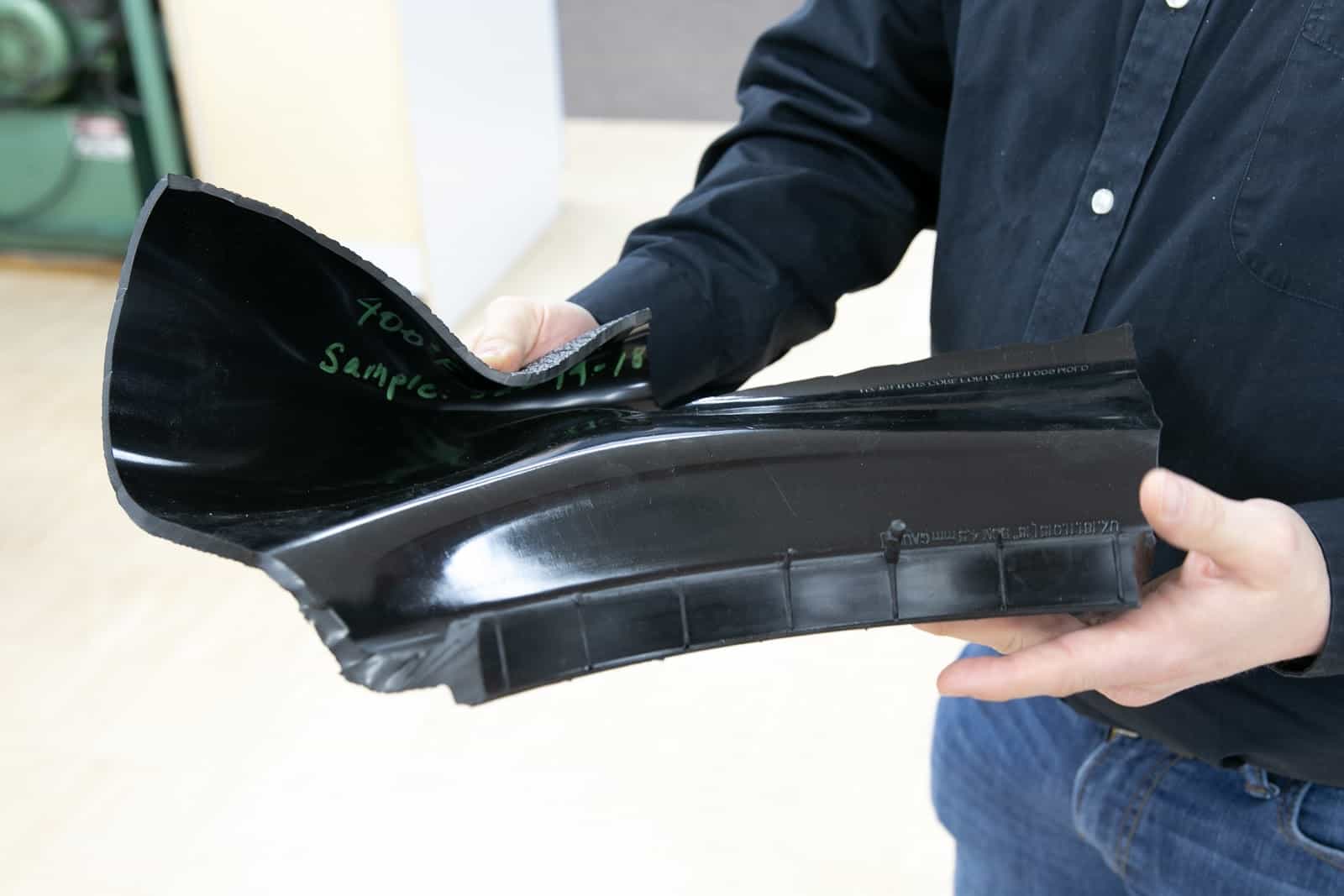Why Do We Test Rubber?
At the simplest level, rubber testing is important because it ensures the safety and wellbeing of the product end user—not to mention their satisfaction. Rubber testing ensures quality, which means a good reputation for the manufacturer and a happy consumer.
Rubber tires need to be durable and grip a range of road conditions and maintain fuel economy. Rubber playground equipment and mulch needs to be deemed safe before installation. And rubber tubing needs to be able to withstand whatever liquid will be running through it.
As an original equipment manager, you always want to be certain that your product will perform at or beyond its expected level and comply with industry regulations. That’s where independent rubber testing laboratories, like ACE, come into the picture.
Rubber Testing Methods
A rubber testing laboratory will run one or more physical and analytical tests to ensure that your material will perform as expected, meet government requirements, and satisfy industry standards in its final form.
The right tests for your rubber will vary depending on the end use of the product, as well as the goals of testing. Maybe you want to check for industry standard compliance. Maybe you’re interested in quality assurance or research and development. Whatever your personal purpose for material testing may be, there is a test or series of tests that we can perform to meet your challenge.
Our rubber testing methods focus on factors of strength, wear, and temperature. By testing these factors, we can predict the durability of the rubber sample, its life cycle, and its ability to stand up to extreme temperature conditions.
Strength
We can gauge the quality of your rubber using a variety of tests, including the MDR, the ODR, and the Durometer Hardness test. We can also test the viscoelasticity of your rubber sample with our Mooney Viscometer.
MDR tests and ODR tests both determine the vulcanization characteristics of rubber compounds. The ODR is an older technology that uses an oscillating disk cure meter. Its data often works together with MDR data as a quality control check.
Durometer is a material’s resistance to permanent indentation. Performing a Durometer Hardness test on vulcanized rubber allows us to evaluate the hardness of the sample. We apply force to the sample with an indentor under specific conditions and record the results, deciding its hardness based on the sample’s behavior.
Finally, our Rubber Process Analyzer will test your material—raw or compounded—for pre-vulcanization characteristics or post cure properties. Both are helpful for quality control and research and development.
Wear
Abrasion testing is an excellent tool for predicting the wear properties of many materials, including rubber. We can evaluate the rubber sample’s ability to resist wear in two ways. The first involves a rotary abrader, and the second uses a rotary turntable.
When using a rotary abrader to evaluate a material’s ability to withstand wear, we fit the rotating drum with an abrasive media. Then, we evaluate your material’s performance by comparing the sample’s weight before and after running it against the rotary drum abrader.
We can also perform abrasion tests with a rotary turntable. This kind of testing, called taber testing, uses a turntable to evenly expose your material to abrasive wheels over a set number of cycles. We then measure your rubber’s weight loss, volume loss, depth of wear, and standardized wear index value.
The results of these abrasive tests are useful for comparative analysis, quality control, and research and development.
Temperature
Temperature testing for rubber and plastic results in essential information about the capabilities of your material when exposed to extreme temperature. We design your temperature tests based on the information you need—will my rubber withstand extreme sub-zero temperatures? What about a fire?
To find out how your material will perform in low temperatures, we perform Temperature Retraction and Brittleness Point tests. Engineers often use these tests for research and development purposes by uncovering the lowest temperature a material can handle while still performing to compliance standards.
Heat Aging, on the other hand, is an accelerated aging test method that evaluates vulcanized rubber’s reaction to high temperatures. By heating the rubber, we can check for degradation from both oxidative and thermal aging. You’ll learn if the material is suited for a high-temperature application, as well as a prediction of its life cycle.
Rubber Testing with ACE
At ACE, we are committed to integrity, trust, and excellence, so you can feel confident sending your rubber product into the world to start improving lives. We deliver the industry’s shortest turnaround times, guarantee order traceability, and test your materials with industry-standard, repeatable tests in our state-of-the-art rubber testing lab.
We will help you excel wherever you want to excel—be it fuel economy improvements, advancements in durability, new discoveries in research and development, or something else entirely.
So tell us about your goals—we love a good challenge.
In the news
A Guide to Cool Roof Systems
What Is a Cool Roof System? Traditionally, commercial and residential buildings alike have roofs made from dark materials, such as shingles and tiles. Dark roofing materials absorb more heat than lighter materials, and that heat is transferred to the building, which...
What Is FDA CFR 21 177.2600 and How Can I be Compliant?
The consumer goods industry is highly regulated, especially regarding food safety. If you’re making any kind of rubber or polymer part for machines that process food, you need to understand and comply with the FDA’s 21 CFR 177.2600 regulations. This standard is often...

